10 Spring Lawn Care Tips for Tallahassee, FL
BY KIMBERLY MAGERL | APRIL 12TH, 2023 | FLORIDA, LAWN CARE, TALLAHASSEECharming cafes and elegant restaurants dot the streets of Tally, creating a tasty escape from the heat in the heart of Seminole country. Tucked away in the northern panhandle region of Florida, Tallahassee’s spring temperatures range from 70 to 90 degrees Fahrenheit. Implement our ten spring lawn care tips and take advantage of the pleasant weather to prepare your yard for the humid summer just around the corner.
In this article, we’ll cover:
- Dethatch Your Lawn
- Aerate Your Warm-Season Turfgrass
- Test Your Soil
- Mow More
- Water As Needed
- Control Weeds
- Perform Pest Control
- Identify and Treat Lawn Diseases
- Overseed Your Lawn
- Apply Fertilizer
What Are the Benefits of Spring Lawn Care?
To most of the United States, spring in Tallahassee feels like summer. Average March temperatures of 75 degrees Fahrenheit gradually increase to 90 degrees by May, setting off the active growing seasons for most Florida plants.
Floridians care for their warm-season grasses from March to May, hoping to encourage fresh growth before the extreme heat and humidity take over in June. Spring lawn care is more than mowing your lawn and setting the timer on your sprinkler. As your yard goes through its most active growing season, you need to be on the lookout for diseases, pests, and bare spots. With the proper spring maintenance plan, your lawn will be ready to take on the extreme heat.
Spring lawn care benefits include:
- Increased drought resistance
- Healthy grass is 10 to 15 degrees cooler than concrete or asphalt
- Reduced air and noise pollution
10 Spring Lawn Care Tips for Tallahassee
1. Dethatch Your Lawn
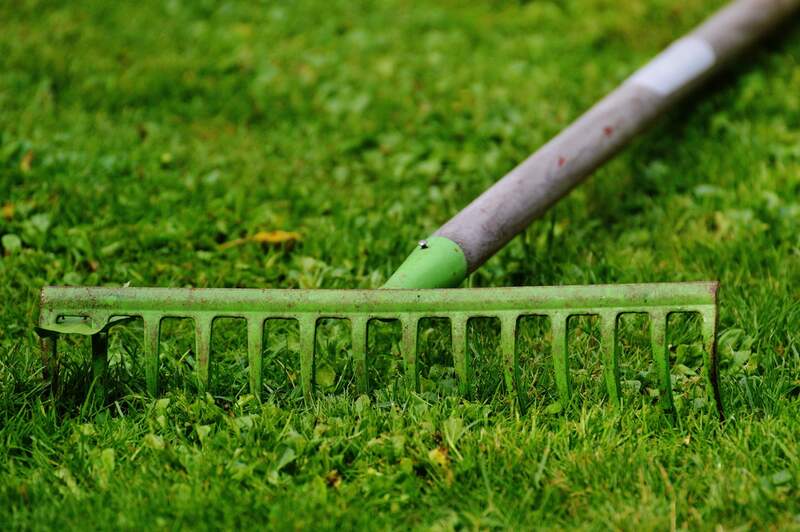
Photo Credit: Rawpixel
Tallahassee winters are short and relatively cool, causing some grass cultivars to go dormant and develop thatch. Thatch is the tight layer of dead grass intertwined with living grass blades and roots that accumulates just about your soil level and below eyeline visibility. A thin layer of thatch insulates grass roots and makes your turfgrass more resilient. However, too much of a good thing is a bad thing.
Dense thatch causes:
- Pests and disease
- Increased moisture and humidity
- Shallow root growth
- Restricted air, water, and nutrient penetration
Watch for thatch that is half inch or more thick, spongy turf, footprints, increased pest activity, and active diseases. Always detatch your lawn during its active growing season in mid-spring to early summer using a dethatcher, also known as a lawn scarifier. Dethatchers work like a complex rake to remove thatch to the surface of your lawn for collection. Always remove the layer of thatch immediately.
2. Aerate Your Warm-Season Turfgrass
Springtime is notoriously dry in Tallahassee with only five days of precipitation per month on average. Aeration is a common method to introduce oxygen back into struggling lawns with restricted root growth, allowing for water and nutrients to permeate more easily.
Oxygen allows your turfgrass to establish deep roots and a dense appearance. There are two types of common aeration: spike aeration and core aeration. Aerate your Tallahassee lawn in mid-spring to stimulate root growth before summer.
Spike Aeration
Spike aerators create small holes in the ground with a rotating punch. This method is less effective than core aeration. Spike aeration does not remove material from the soil, so there is no chance of natural de-thatching.
Core Aeration
Core aerators remove plugs of soil to create small holes so the soil can breathe. This method leaves leftover plugs of soil on the surface of your lawn, adding beneficial nutrients and microorganisms to decrease thatch naturally.
Core aeration is the best method for the northern panhandle region with its fine sandy loam soils. Fine sandy loam comprises less than 20% clay, less than 50% silt, and between 40 to 50% sand. They retain less moisture, heat more quickly, and lack the nutrients of more dense soil types. Core aerators do a better job of breaking up sand particles, creating airflow, and improving water and nutrient access.
3. Test Your Soil
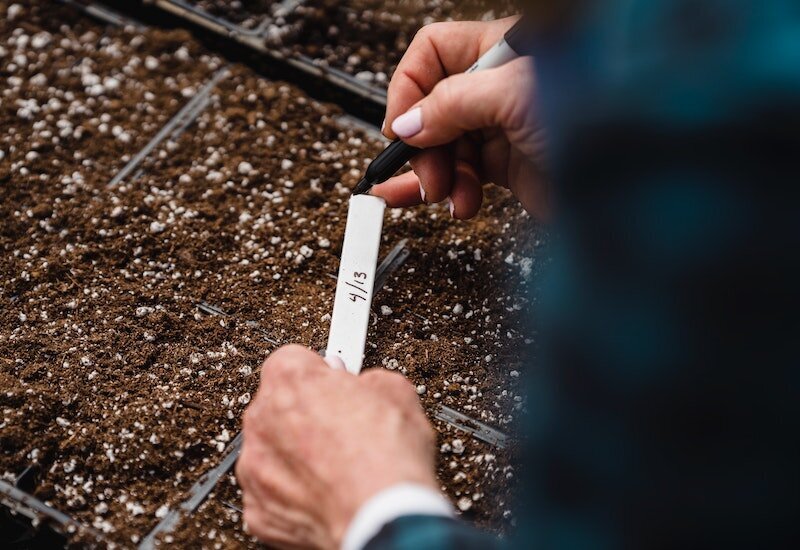
Photo Credit: Pexels
Plants and turfgrasses growing in sandy loam soil require regular fertilization and irrigation, and spring soil preparation is crucial to the success of your Tallahassee landscape. Proper preparation provides nutrients for your grass to thrive, even in the deficient soils of the northern panhandle. Residents should send in a soil sample for testing in March.
Collect small samples from different areas of your landscape and combine them to create a one-cup sample. Send the sample in to receive your unique results detailing amendments you can make to improve your soil. Common amendments include lime for soil pH imbalances and nitrogen, potassium, and phosphorus applications.
4. Mow More
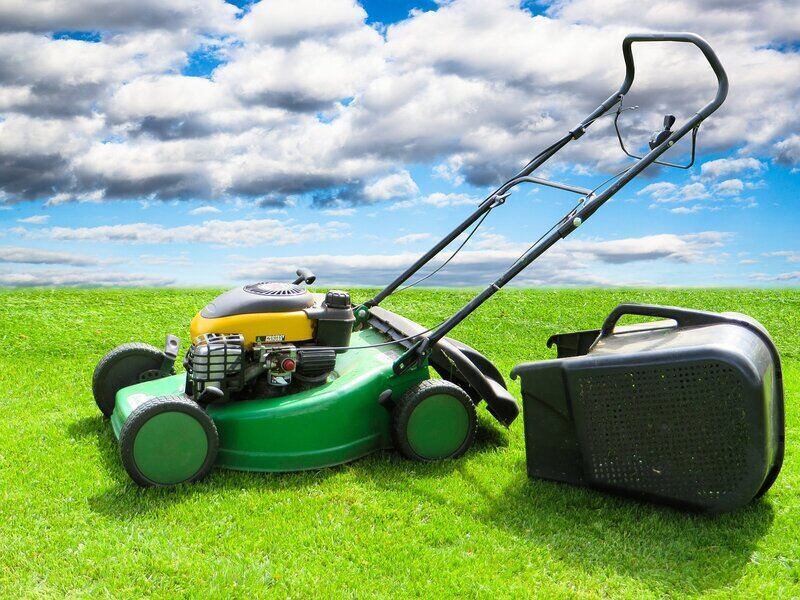
Photo Credit: Pixabay
Taller grass blades develop deeper roots and a dense appearance. Mowing your lawn stresses your warm-season turfgrass, leaving it more susceptible to insects, disease, drought, and sunscald. Tallahassee’s subtropical climate requires year-round lawn maintenance. Warm, dry springs kick-start the active growing season in March.
Your grass variety determines your unique mowing schedule and lawn height. To avoid injuring your lawn, never remove more than ⅓ of the leaf blade regardless of your cultivar. and always cut less, more often. You should mow weekly within the recommended range for your grass type and leave clippings unless you see large clumps on your lawn.
| Grass Type | Recommended Mowing Height |
| Bahiagrass | 3 – 4 inches |
| Bermudagrass | 1 – 2 inches |
| Centipedegrass | 1.5 – 2.5 inches |
| St. Augustinegrass | 3.5 – 4 inches |
| Zoysiagrass | 1.75 – 2.5 inches |
Bahiagrass
Bahiagrass is the most low-maintenance warm-season variety. Growth peaks in March thanks to Tallahassee’s warm spring temperatures. Aim to mow every seven to 14 days to maintain a height of 3 to 4 inches, encouraging deeper roots and a more dense and resilient turfgrass.
Bermudagrass
Bermudagrass is the lowest-growing warm-season grass and the most high-maintenance, requiring weekly to twice weekly mowing sessions. Mow to a height of 1 to 2 inches to encourage deep roots and a better appearance.
Centipedegrass
Like bahiagrass, centipedegrass benefits from a regular mowing schedule every seven to 14 days. Mow to a height of 1.5 to 2.5 inches to prompt a more extensive root system to withstand drought and nematode stress.
St. Augustinegrass
The most popular Florida turfgrass is prone to scalping and sun scalding, requiring particular mowing heights. Mow St. Augustinegrass to heights of 3.5 to 4 inches to encourage deep roots and decrease insect activity.
The more frequently you mow this dense turfgrass, the less likely your lawn will develop a buildup of harmful thatch. While some thatch is a good thing, too much is harmful, blocking out light and water.
Zoysiagrass
Mow Zoysiagrass weekly, aiming for heights of 1.75 to 2.5 inches. Zoysiagrass leaves contain larger amounts of lignin and silica, making them more resistant and difficult to mow.
5. Water As Needed
Unless your lawn is brand new, all warm-season varieties respond well to the typical drought conditions of a Tallahassee spring. The best watering method for Florida turfgrasses is as needed early in the morning, starting in mid-March. You will know it is time to water your turfgrass when you notice a dark blue-gray color, footprinting, or wilted, folded, or curled leaves.
Bahiagrass and St. Augustinegrass
Water these warm-season varieties as needed. Aim for ⅔ to ¾ inch of water per application. Each application will moisten the top 8 inches of soil, saturating the roots of your turfgrass.
Bermudagrass, Centipedegrass, and Zoysiagrass
The roots of bermudagrass, centipedegrass, and Zoysiagrass are more shallow than other cultivars. Apply ½ to ¾ inch of water per application to moisten the top 4 to 6 inches of soil.
6. Control Weeds
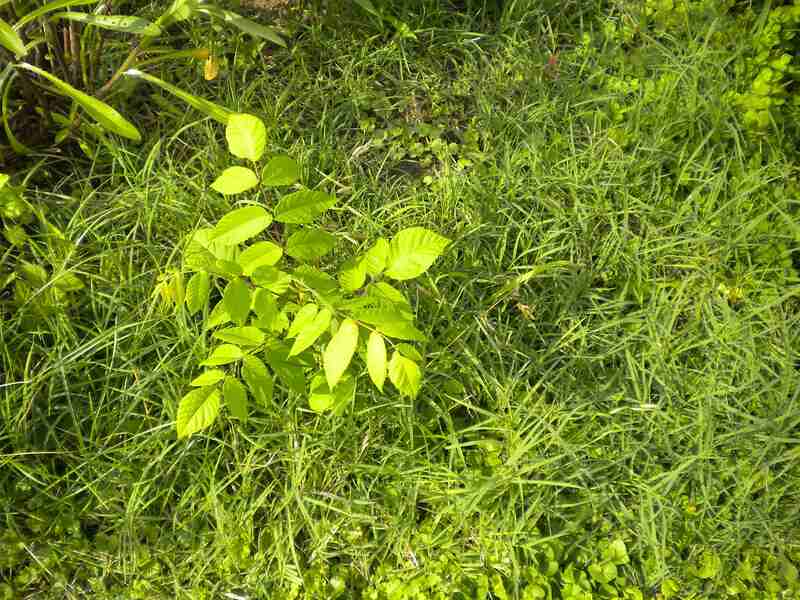
Photo Credit: Pixabay
Tallahassee’s subtropical climate creates the optimal habitat for plant growth. Unfortunately, this means it is also prone to intense weed growth, signifying an underlying problem with your lawn’s health and maintenance plan. Weeds thrive in low-nitrogen soils, imbalanced pH, and thinning damaged turf.
Weeds steal nutrients, water, and sunlight from your warm-weather grass and spread pests and diseases. The best control and prevention method is routine maintenance, coupled with supplemental chemical methods like post-emergent herbicides and pre-emergent herbicides.
Pre-Emergent Herbicides for Grassy Weeds
Pre-emergent herbicides minimize the number of weeds in your yard by killing seeds before germination. Apply pre-emergent herbicides in mid-March when soil temperatures reach 65 degrees Fahrenheit to control grassy weeds.
Look for solutions containing benefin, bensulide, oryzalin, or prodiamine. Wait 60 days and apply a second application of pre-emergent herbicide.
Common grassy weeds in Tallahassee include:
- Annual Bluegrass
- Crabgrass
- Crowfootgrass
- Dallisgrass
- Goosegrass
- Quackgrass
- Sandbur
- Torpedograss
Post-Emergent Herbicides for Broadleaf Weeds
Post-emergent herbicides target annual and perennial broadleaf weeds, disrupting their growth. Use these herbicides year-round to target weeds you can see.
Do not use post-emergent herbicides if temperatures rise above 90 degrees Fahrenheit or fall below 40 degrees Fahrenheit or if your lawn is moisture stressed. Additionally, be sure to wait a few days after a fresh mow before applying chemical treatments.
Common perennial and annual broadleaf weeds include:
- Buttonweed
- Chickweed
- Clover
- Dandelion
- Henbit
- Florida pusley
- Knotweed
- Matchweed
- Nutsedge
- Pennywort
- Plantain
7. Perform Pest Control
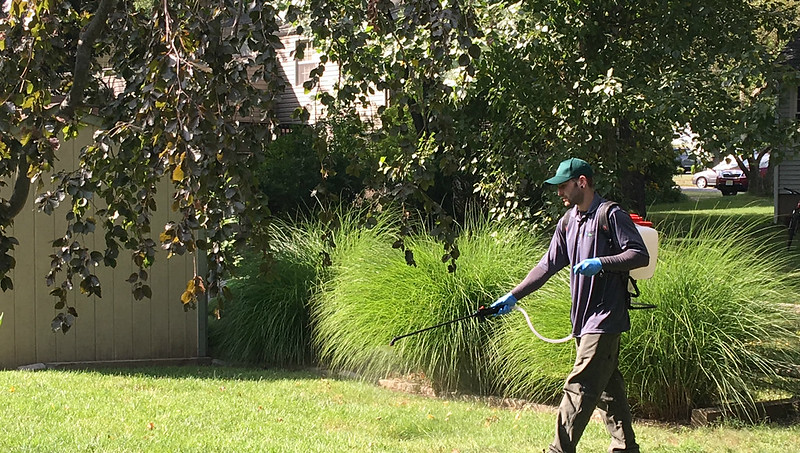
Photo Credit: Praxis Eco / Flickr / CC BY 2.0
Different insects invade particular cultivars at different times, but all insects love the year-round warm weather. The most common Tallahassee springtime pests include chinch bugs, hunting billbugs, ground pearls, and nematodes.
Chinch Bugs
Chinch bugs love St. Augustinegrass. Watch for yellow spots in sunny locations, signifying chinch bug activity. These foliage-seeking insects suck vital plant juices from your turfgrass with peak activity occurring in March and April.
DIY collect chinch bugs using a coffee can with both ends removed to create a hollow pipe. Insert the can into the soil inside the affected area. Fill the can with water and leave it for a few days. Chinch bugs will float to the top of the can for removal. If you notice more than 15 chinch bugs per square foot, it is time to call a professional.
Ground Pearls
Ground pearls are another foliage-seeking, scale insect that loves sucking on the root fluids of most turfgrasses, most notably centipedegrass. These insects lay hundreds of pinkish-white, waxy, sac-like eggs from March to June. The round “pearls,” or eggs range in size from as small as a grain of sand to as large as 1/16th inch in diameter. Unfortunately, these pearls are likely to go unnoticed and are located up to 10 inches deep in the soil.
Watch for yellow or brown patches of stressed or dead turfgrass. The best defense against these pests is proper lawn maintenance and drainage. No insecticides on the market control ground pearls. Tend to your regular lawn maintenance, including nutritional imbalances and drainage needs.
Hunting Billbugs
Hunting billbugs are a year-round problem for homeowners with Zoysiagrass and centipedegrass. Watch for irregular-shaped patches of dead turf. Hunting billbugs feed on the roots of turfgrasses like ground pearls.
Infestations are often misdiagnosed as dormancy in the northern panhandle region, but hunting billbug activity peaks in the spring. Treat billbugs with an insecticide application containing bifenthrin, beta-cyfluthrin, or imidacloprid.
Nematodes
Nematodes affect most warm-season turfgrasses and are one of Florida’s most prolific pests. The best prevention method is proper lawn maintenance to develop dense roots. Nematodes are unsegmented roundworms, and unfortunately, Florida is home to numerous types.
Watch for yellowing and thinning turf, especially during dry periods. Nematode populations peak in mid to late spring, and nematodes need moisture to survive. Apply nematicides like Indemnify to affected areas alongside routine lawn maintenance and proper yard drainage.
8. Identify and Treat Lawn Diseases
Lawn diseases and fungi love Florida’s subtropical climate. The best defense against these lawn invaders is routine maintenance, watering, and fertilization for a healthy and dense lawn. Some of the most common diseases affecting Tallahassee turfgrasses are large patch, pythium root, gray leaf spot, take-all root rot, dollar spot, spring dead spot, and centipedegrass decline.
Large Patch
Large patch is a fungus affecting most Florida turfgrasses, including St. Augustinegrass, centipedegrass, and Zoysiagrass. The fungus typically occurs in winter through the end of spring. Watch for brown, circular patches several feet in diameter.
Most large patch infestations do not respond to fungicide applications. The most effective control and prevention method is proper lawn maintenance. Improve drainage and air movement. Monitor patches and limit fertilization in affected areas. Avoid over-watering.
Pythium Root
Pythium root occurs in poorly drained or over-watered soils and commonly affects St. Augustinegrass and Zoysiagrass year-round. It is a water mold pathogen that causes slow-growing, thinning turf with irregular, bleached patches of yellow grass.
Combat current and future infections by improving drainage and increasing sunlight exposure, if possible. Avoid spreading pythium root by reducing mowing and watering frequencies. Apply a blend of phosphorus, potash, and nitrogen to the soil to combat active infections.
Gray Leaf Spot
St. Augustinegrass is prone to fungal infections. Grey leaf spot is another turfgrass fungus in Tallahassee popping up in April through the end of summer. Watch for grass that appears yellow, mottled, or scorched.
Treat gray leaf spot with proper lawn maintenance. Improve air circulation by removing thatch. Avoid fertilization and post-emergent weed killers while the disease is active. Monitor and fix drainage issues and avoid over-watering to prevent active and future infestations.
Take-All Root Rot
Take-all root rot is a soil-dwelling fungus active in spring through early summer. Be on the lookout for yellow or brown grass blades, wilting, horizontal stems, and dark brown roots.
Treat the warm-season turfgrass disease using fungicide labeled for take-all root rot. Apply to the affected area in 14-day intervals during spring. Prevent the fungus with proper lawn maintenance by improving drainage, reducing thatch buildup, and increasing the time between irrigation sessions.
Dollar Spot
Dollar spot affects bermudagrass, bahiagrass, and centipedegrass. It is caused by a fungus living in Florida soils and is extremely common in the Southeast. Watch for circular brown or yellow spots that look like dollar coins.
Like most fungi, treat dollar spot with proper lawn maintenance. Maintain nitrogen levels by applying a nitrogen-based fertilizer to bermudagrass or bahiagrass and minimize moisture stress by ensuring proper drainage. Always water deeply and infrequently in the early morning to reduce foliage wetness.
Spring Dead Spot
Soil-dwelling fungus, spring dead spot affects Tallahassee bermudagrass. Keep an eye out for circular patches of dead grass ranging in diameter from 6 inches to several feet. The easiest way to spot spring dead spot is to monitor your lawn during its active growth phase in mid-March and early April. Areas affected by spring dead spot will not go through the growth process.
Treat spring dead spot by removing thatch and aggressively aerating affected areas to relieve soil compaction and increase airflow.
Centipedegrass Decline
Centipedegrass decline develops in mature cultivars. Similar to spring dead spot, watch for yellowing or brown patches of dead turfgrass during active spring growth. Centipedegrass decline occurs for numerous reasons, including:
- Soil pH greater than 6.5
- Overfertilization with nitrogen
- Uneven surfaces
- Improper mowing heights
- Overirrigation
- Soil compaction
- Nematode infestation
Treat centipedegrass decline by adjusting soil pH levels according to your soil test results. Avoid overfertilization with nitrogen and always follow recommended lawn maintenance, including mowing highs and frequencies. Never scalp centipedegrass and mow often to eliminate excessive thatch buildup.
9. Overseed Your Lawn
Spring is the best time to seed or replant your lawn in Tallahassee. The active growing season beginning in mid-March encourages fresh growth, filling in thin and patchy areas.
Overseeding
Overseeding involves spreading new grass seed over existing turfgrass to fill thin areas. Bermudagrass, bahiagrass, and centipedegrass are low-maintenance cultivars that respond well to overseeding.
Prepare to seed your Florida lawn in mid-March to early April. Spread 0.5 to 1 pound of seed per 1,000 square feet for bermudagrass and bahiagrass varieties and 4 ounces per 1,000 square feet for centipedegrass.
Sod Plugs
St. Augustinegrass and Zoysiagrass do not respond to overseeding. Instead, plan to replant large bare areas using sod plugs in mid-March, April, or May. Space plugs 6 to 12 inches apart and water well daily. Keep crabgrass at bay by applying a root-safe pre-emergent herbicide.
10. Apply Fertilizer
The best time to apply fertilizer to your Tallahassee turfgrass is mid-April, before the Florida summer heat sets in. Fertilizer promotes healthy growth. The type of fertilizer for your lawn depends on your turfgrass cultivar and your unique soil sample analysis results.
Fertilizer comprises three primary nutrients: nitrogen (N), phosphorus (P), and potassium (K). Labels have three numbers, such as 15-10-5, which means the fertilizer contains 15% nitrogen, 10% phosphorus, and 5% potassium. Select a fertilizer ratio to satisfy your soil test results.
Keep in mind that Florida’s soil is high in phosphorus, so it is often unnecessary to apply fertilizer containing this chemical. Apply 0.5 to 1 pound of nitrogen per 1,000 square feet in mid-April, but keep in mind that shaded grass requires less fertilizer than grass growing in full sun.
The Urban Turf Fertilizer Rule mandates that slow-release nitrogen fertilizer applications cannot exceed 2 pounds of nitrogen per 1,000 square feet, and quick-release, soluble nitrogen fertilizer applications cannot exceed 0.7 pounds per 1,000 square feet of lawn.
Centipedegrass
Mature centipedegrass has low nitrogen requirements. Always follow the amendment recommendations from your soil sample test results. Centipedegrass does not respond well to overfertilization, and nitrogen applications are not typically necessary. High nitrogen levels lead to centipedegrass decline, increased insect activity, and thatch accumulation.
FAQ About Spring Lawn Care in Tallahassee
Use sprinklers or an automatic irrigation system to apply water in 10 to 20-minute segments, twice per day, until the seeds have germinated. The germination process typically takes seven to 10 days in Florida.
You should stop fertilizing your lawn at least one month before overseeding to give the new seeds a chance to germinate and grow without struggling against actively growing grass. Additionally, you apply fertilizer after overseeding, which is the preferred method. Apply a slow-release fertilizer immediately after overseeding or wait two to three weeks and apply a
fast-release fertilizer to your newly seeded lawn.
Warm-season grass varieties are drought-resistant and most benefit from drying out in between watering sessions. Overwatering your turfgrass stresses your lawn, leading to increased pests and diseases. Watch for these signs you are overwatering your turfgrass:
• Thick layer of thatch over ¾ inch thick
• Fungus growth including mushrooms
• Increased weed growth, including crabgrass and nutsedge
• Signs of pest activity
• Spongy grass and footprint indents
• Pooling water and increased runoff
Get Help With Your Spring Maintenance Plan
Tallahassee homeowners love two things: their outdoor space and Florida State University football. With the proper spring lawn care schedule, you can enjoy your yard for most of the year, protect its green color from the summer heat, and ready your landscape for Florida hurricane season. Consider some hurricane-resistant landscaping ideas to get you started.
If you need help controlling spring weeds or pests, contact a Tallahassee lawn care pro to help your landscape establish deep roots and wind-resistance
Main Photo by: Famartin / Wikimedia Commons / CC BY-SA 4.0